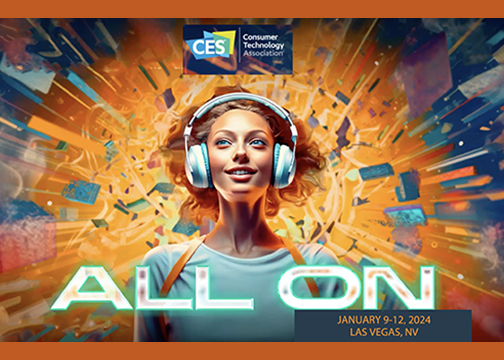Years ago CES was consumed by virtual reality (VR) gear. For a couple shows, the companies making goggles and related gear seemed to be everywhere. And people spoke hopefully about solving some of the big technical hurdles for Augmented Reality (AR). All of which raised expectations that we were on the cusp of the Mixed Reality (XR) world.
Then winter came. Sales of the first VR goggles were uninspiring. The technical problems around AR persisted. Everyone moved on to other hot, new things, and XR largely disappeared from CES.
This year that changed. Obviously, the pending launch of Apple’s Vision Pro is a major catalyst in rekindling interest in the space, but there have been other developments,.
Notably, the software ecosystem has advanced. We are starting to see companies displaying new game titles specifically created with VR in mind. There are also new accessory and component companies coming to the fore. We saw several companies displaying some combination of XR hardware and software again in several areas on the show floor. We did not meet Wearable Devices personally, but heard some intriguing stories about their wristbands which can do neural monitoring and capture intent, which could be an important I/O tool for XR. And there was Ixana whom we discussed last year which was demoing their audio and video solutions which dramatically lower power requirements for XR peripherals.
The category is not out of the woods yet. A lot depends on Apple and the Vision Pro. The price tag, buying model, user interface and availability of the Vision Pro remain important problems. We also think the software ecosystem for the device will grow in fits and starts as developers balance catching the Vision Pro wave with the realities of a very small target audience for the foreseeable future. That being said, we see signs that the rest of the segment is moving forward. The Vision Pro is a catalyst for speeding things up, but does not have to be a break-out hit for the category to grow.
And then there is the question of AR. Connected glasses which can layer data over the real world hold the potential to become our next major device. The technical problems are still huge. But even here, there are signs of progress. The announcement which non-attendees asked us about the most, by far, were the transparent LED monitors from LG and Samsung. We saw these first hand and came away suitably impressed. Samsung demo’ed their screens providing a wall of glass that overlaid a live soccer match. LG’s demo was more of live decoration for their massive booth. But it is easy to see how these are going to be much more important for AR. Mark these down as steps in the right direction, but still a long way to go.

Finally, there is the critical question as to software for all of this. As noted, Apple is likely to be the driving force in building this ecosystem, but we did see some tantalizing ideas at the show.
For example, probably our favorite app was in the Sony Booth. They have developed a system with Hawkeye Innovations, Pulselive and Beyond Sports, that converts video images of sports matches into the digital realm. Viewers can then review the gameplay from any angle they choose. This runs the gamut from low-res diagrams of movement which can be used by coaches to full-blown digital avatars allowing users to insert their own images into the gameplay.

We have no idea when this will get deployed into VR, but we can easily see it being a hit.




Leave a Reply